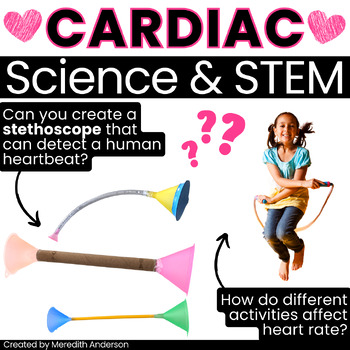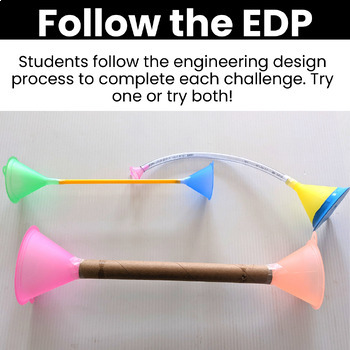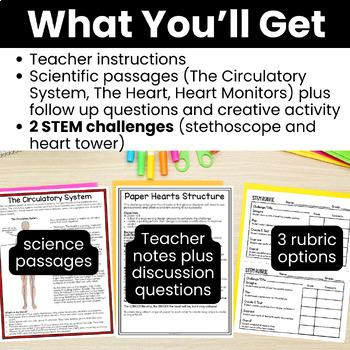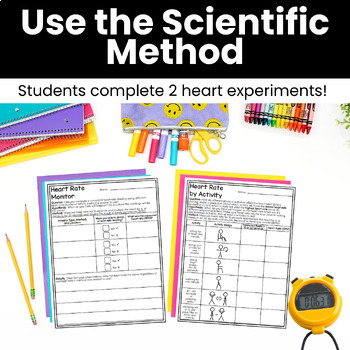Valentine's Day Science and STEM Bundle - Cardiac Heart Experiment and Challenge
- Zip
What educators are saying
Products in this Bundle (2)
Description
Looking to explore the circulatory system with your students? Try some hands-on science and STEM activities! I recommend completing the stethoscope STEM challenge FIRST so that students can use their stethoscopes to measure heartbeat for the science experiment (as long as students are comfortable using the stethoscope).
❤️ What You'll Get: Cardiac STEM ❤️
Try these Valentine's day heart-themed STEM challenges with your students! They will create a stethoscope to hear a heartbeat (or sound through earbuds or a speaker) and a paper heart tower that is easy to set up but tricky to master. Students will need to use trial and error as well as balancing skills to craft this tower!
- Teacher instructions and lesson plan
- Differentiated recording page options that guide students through the engineering design process, including editable options
- 2 STEM activities: stethoscope challenge and heart tower challenge
- Science reading passages with follow-up questions: The circulatory system, the human heart, and heart monitor devices
- Creativity challenge: Complete the Drawing activity
- 3 rubric options
✂️ Materials Needed ✂️
- wide straws- cardboard tubes, and plastic funnels (plastic tubing is optional)
- balloons (optional, latex free)
- paper
- tape
❤️ What You'll Get: Cardiac Science ❤️
Students will learn about the circulatory system, their heart, and methods of measuring heart rate in this hands-on science resource! After reading about the science topics, they will explore two experiments: methods of measuring heart rate, and how heart rate varies depending on activity.
- Three reading passages for students to learn about the circulatory system, their heart, and methods of measuring heart rate. These can be read aloud together or individually. Follow up comprehension pages are included for the first two passages.
- Heart rate measurement experiment: Where and how can you measure heart rate? Students will attempt to measure their heart rate in a variety of ways to figure out which is the best way to measure it for the second experiment!
- How does heart rate vary with different activities? Students will measure resting heart rate and compare it to other activities. Editable pages are included so that you can include the specific activities that work best for your students and classroom.
- Creative drawing activity (optional)
- Answer Keys
✂️ Materials Needed ✂️
You don't actually need much for this set of experiments (yay), but these are suggested:
- stopwatches (clocks with a second hand or counter are also fine! Students will be counting heart beats for 15 or 30 seconds and then multiplying to obtain the heart rate in BPM).
- a heart rate measurement device is useful but not required - many phone and tablet apps are able to measure heart rate with a finger over the camera, a pulse oximeter can also be used if you are able to borrow a few for students to gather data with
- mini marshmallows and toothpicks: students can create a visual heart rate monitor (as shown in the thumbnails above), however this method can be tricky to get working so I only recommend it for upper grades as it takes a lot of trial and error. It's pretty neat to see though, if you can get it to work!





